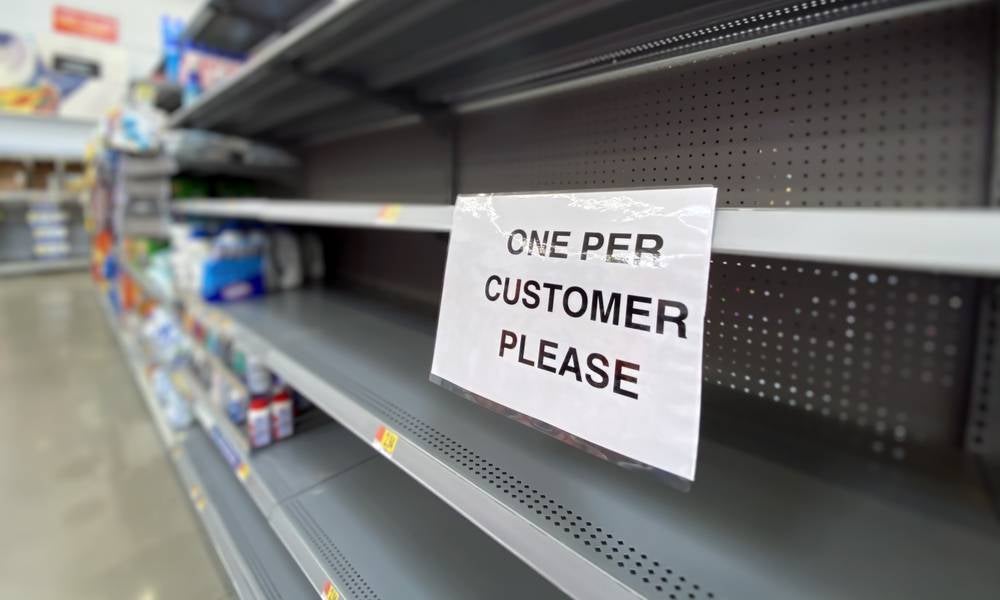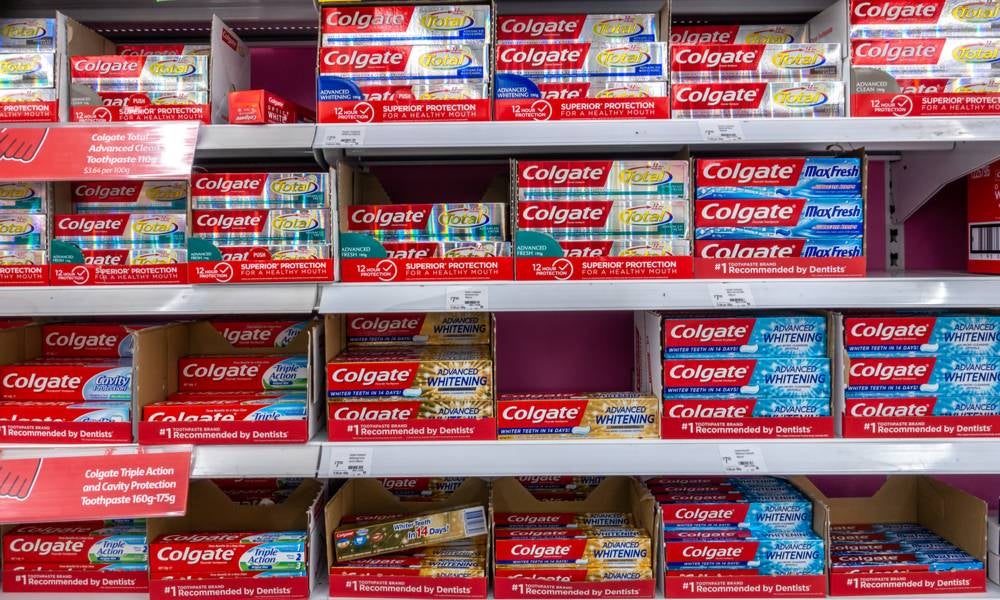Supply chains and COVID-19 stock shortages: five things to know
Stock shortages during the COVID-19 pandemic are about more than just panic buying or labour shortages in supply chains, says UNSW Business School's Professor Jack Cadeaux
Most of the stock shortages during COVID-19 have been blamed on non-marketing macro factors, such as government policy, labour shortages in supply chains, transport bottlenecks etc. Or, at the other extreme, stock shortages have also been blamed on consumer psychology: people's fear of missing out and irrational hoarding (why would anyone need to buy a two-year supply of Panadol when COVID-19 is an acute infection and not a chronic condition such as heart disease or arthritis?).
But what about the role of marketing? In contrast to what many prefer to believe, marketing is about much more than simple consumer psychology. Marketing is more complex than most realise; it is multifaceted. It may even be more complicated than epidemiology (the study of diseases and how to control them). And, like epidemiology, everyone seems to be an expert. Different products and markets have different characteristics, and it's crucial to examine these differences as there are several other reasons why there have been so many stock shortages during the pandemic.

1. Predicting demand volatility and the availability of substitutes
To better understand recent events, let us first consider the predictability of demand volatility across product categories. For example, less predictable would be the recent spike for Panadol, following advice from the nation's Deputy Chief Medical Officer, Michael Kidd, to stock up to manage the virus' symptoms at home, or the spike in demand for Rapid Antigen Tests (RATs) due to government policy statements. Neither of these are frequent purchases. Then there are more predictable stock shortages, including staples such as beef mince and toilet paper. Retailers can more easily monitor sales patterns for frequently purchased essential items (especially now that they know shortages are likely).
But then there is also the availability of substitutes within categories (and whether they are marketed as such). For example, many substitutes exist for Panadol, like the generic paracetamol products like Hedanol or even ibuprofen products such as Nurofen. But what about other products with similar effects? Aspirin, for example, is not promoted or supported by the medical community as it is in North America, where many brands exist and are widely used for fever reduction and pain relief. Many substitutes exist even for mince and chicken, but they are not promoted as such: buy a meat grinder and make your own mince, for example, or use alternative meats such as pork or kangaroo, or use alternative dairy, egg, or even plant proteins.
Read more: How COVID-19 has changed consumer trends forever
2. The impact of brand power on brand choice
Strong brand recall and recognition, and very high brand share in some categories, mean Australian consumers often believe they have little choice when it comes to many household products (especially in supermarkets). Consumers tend to gravitate towards the same products (like Colgate toothpaste) as opposed to looking for new substitutes. Fortunately, no one advised consumers to stock up on toothpaste.
In North America, consumers have a far greater brand choice in supermarkets. For example, Panadol is the market leader in Australia and is treated as paracetamol's de facto generic name. However, it has not become a generic legal name like aspirin, which lost its status as a protected brand many years ago. No one ever refers to generic aspirin as acetylsalicylic acid. It is simply aspirin, sold under many brand names and combined formulations in North America (Bayer, Excedrin, Goody's Headache Powder, Ecotrin, etc.).

3. Dependency on suppliers
Dependency on suppliers is a significant issue in Australia, as supermarkets have increasingly allowed a single major supplier to dominate many fast-moving consumer goods (FMCG) categories (like Panadol for pain relief and Colgate for toothpaste). But this dependency can increase supply risk in the face of manufacturer-specific production and supply chain constraints.
Again, retail categories and brand market structures are far more competitive in North America, where major toothpaste players such as Crest and Oral B compete vigorously with Colgate and Tom's of Maine. In sharp contrast to toothpaste or pain relief, a category like wine has many substitutable subcategories, including (amongst reds): cabernet, shiraz, pinot noir, merlot at many different price points, and hundreds of brands and branded variants and can't possibly become a source of meaningful stockouts (except for price promoted items).

4. Margin return on space
Another important factor is the way that retailers expect products to perform, either in terms of the profit they return on space or in other ways, such as continuing to attract or retain shoppers who generally buy a full basket of goods. Space is a big behind-the-scenes factor and could explain why toilet paper is chronically depleted: the margin productivity per unit of space for toilet paper is far lower than for almost any other supermarket product, especially any other health and beauty aid product like cosmetics or even shampoo. Put another way, a $10 twenty roll pack of toilet paper with a $2-3 margin takes up much more space than a $10 bottle of shampoo or a $10 tube of skin cream with the same margin. A twenty roll pack of toilet paper uses maybe 10 times as much space (or more) than does a unit pack of those other products.
If the goal was purely to prevent stockouts, then raising prices would be a far better way to ration supply than unit purchase limits (like the limits of one pack per customer). Consider petrol, for example. The margin factor also potentially explains why there are stockouts for mince but not for fillet steak. Supermarkets could simply raise toilet paper prices to match demand, but of course, they won't do that, and instead, they essentially subsidise toilet paper to attract and retain more shoppers, allowing stocks to be depleted.
Read more: Could toilet paper be the new consumer fear index?
5. Supply chain structures and strategies
All other things equal, imported products and longer and more complex chains pose greater risks of bottlenecks for various reasons. These factors underly many of the problems facing new car supply in 2022, as cars are highly complex and have many features and attributes with highly complex supply networks. Flexible production and supply continue to face barriers. Shifting production between categories to match demand can take years (for example, retooling production capacity to make utes instead of sedans is a much greater problem these days, given the massive differences between the two products than it was in the old days of Aussie-made sedan-based utes).
Also, different brands have different strategies. Consider Mazda’s speculation-based inventory planning versus BMW’s postponement-based planning. Speculation-based planning means more stock at dealers and a much faster delivery time. Therefore, manufacturing and supply chain flexibility factors are critical to understanding current and future stock shortages.

Will COVID-19 stock shortages continue?
While retail marketing and supply chain management have always faced the dual challenges of highly complex and changing product assortments and uncertain supply and demand, sophisticated information management at all points in the retail supply chain would yield very high levels of resilience. But, since direct efforts to increase flexibility and real-time adaptation incur high cost and sales trade-offs, it is likely that stockouts and extended waiting times will continue to be a problem and may quickly arise again.
For example, fresh fruit and vegetables face predictable seasonal supply variation and unpredictable production uncertainty due to weather but are also increasingly subject to supply shocks due to shifting labour availability across crops in Australia from temporary migrants. Fruit and vegetables may even get hit by unanticipated demand spikes, perhaps even in response to future preventive nutritional health behaviour associated with COVID-19 becoming endemic. Modern consumers rarely preserve their fruits and vegetables to ward off anticipated shortages for specific products, they shift to frozen and canned substitutes, each with their own supply issues, or simply do without.
But this is where creative substitution can play a key role. Consumer awareness and willingness to substitute through creative or reduced consumption can help circumvent stock shortages. For example, shopping for seasonal fruit and vegetables would shift consumption across different fresh products, like using carrots instead of tomatoes, mangos instead of peaches, or, at least, pears instead of apples. Seasonal crops are also more likely to work with, rather than against, the environment, minimising the requirement for pesticides (which is healthier for everyone).
Jack Cadeaux is a Professor of Marketing at UNSW Business School. For more information, please get in touch with Professor Cadeaux directly.
